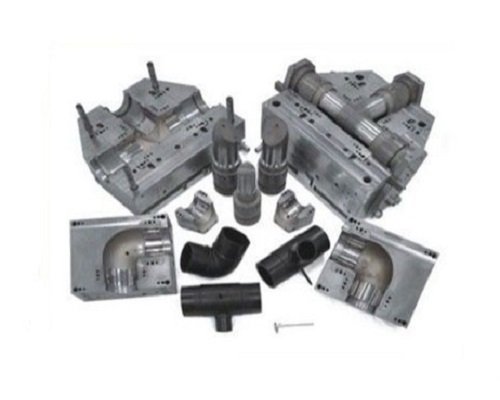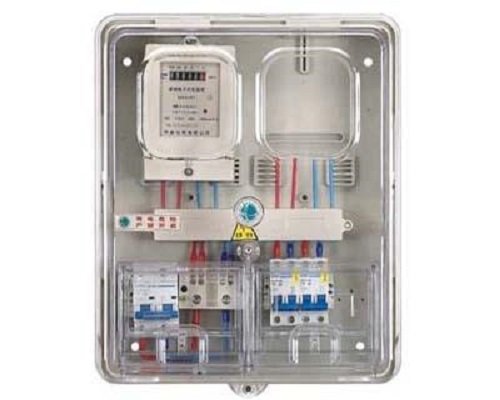Industrial Mold
Industrial mold plays an essential role in the manufacturing industry, particularly in mass production. Industrial mold is used to create products with identical shapes and sizes in large quantities.
Types of Industrial Mold
There are four main types of industrial mold: injection molding, blow molding, compression molding, and rotational molding.
Injection Molding
Injection molding is the most popular type of industrial mold used in mass production. This type of mold involves injecting molten material into a mold cavity, where it cools and solidifies into the desired shape.
Blow Molding
Blow molding is used to create hollow objects, such as bottles and containers. This type of mold involves inflating a heated plastic tube into the shape of the mold.
Compression Molding
Compression molding is used to create complex and intricate shapes, such as automotive parts. This type of mold involves compressing a heated material into the shape of the mold.
Rotational Molding
Rotational molding is used to create large and hollow objects, such as tanks and playground equipment. This type of mold involves rotating a heated mold while the material is gradually coated on the inner surface.
Industrial Mold Design
Industrial mold design is crucial in ensuring the quality of the final product. The design must consider various factors, such as the type of material, the shape of the product, and the production volume. There are two main types of industrial mold design: two-plate mold and three-plate mold.
Industrial Mold Materials
The most common materials used in industrial mold are steel, aluminum, and plastic. The choice of material depends on various factors, such as the type of mold, the production volume, and the expected lifespan of the mold. Each material has its characteristics, such as durability, heat resistance, and corrosion resistance.
Industrial Mold Making Process
The industrial mold making process involves several steps, such as mold design, mold building, mold testing, and mold adjustment. Depending on the complexity of the mold and the production volume, the process can last several weeks or even months.
Industrial Mold Maintenance
Industrial mold maintenance is crucial in extending the lifespan of the mold and ensuring the quality of the final product. Regular cleansing, lubrication, and inspection are all components of proper maintenance. Neglecting maintenance can lead to mold damage, product defects, and production downtime.
Safety in Industrial Mold Production
Industrial mold production involves several safety hazards, such as exposure to chemicals, high temperatures, and mechanical hazards. Employers must provide adequate training and protective equipment to ensure the safety of their workers. Safety measures may include using protective clothing, using ventilation systems, and implementing lockout/tagout procedures.
Industrial Mold Market
The global industrial mold market is expected to grow in the coming years, driven by the increasing demand for mass-produced products in various industries. The key players in the industrial mold market include Schmoll Maschinen GmbH, Barnes Group Inc., FCS Group, and Windsor Machines Limited.
Advantages of Industrial Mold
The use of industrial mold offers several advantages, including efficiency in production, cost-effectiveness, and precision in production. Industrial mold also allows for the creation of complex and intricate shapes that would be difficult to achieve with other production methods.
Disadvantages of Industrial Mold
The disadvantages of industrial mold include the high initial investment required for mold making and the limited design flexibility. Once the mold is made, it can be difficult and expensive to make changes to the design.
Industrial Mold Applications
Industrial mold is widely used in various industries, including the automotive, aerospace, and medical industries. The use of industrial mold in these industries allows for mass production of high-quality and consistent products.
Conclusion
In conclusion, industrial mold plays a crucial role in the manufacturing industry, particularly in mass production. Understanding the types, design, materials, making process, maintenance, safety, market, advantages, disadvantages, and applications of industrial mold can help businesses make informed decisions regarding their production methods.
FAQs
- What is industrial mold used for? Industrial mold is used to create products with identical shapes and sizes in large quantities, particularly in mass production.
- What are the types of industrial mold? The four main types of industrial mold are injection molding, blow molding, compression molding, and rotational molding.
- What are the advantages of industrial mold? The advantages of industrial mold include efficiency in production, cost-effectiveness, and precision in production.
- What are the disadvantages of industrial mold? The disadvantages of industrial mold include the high initial investment required for mold making and the limited design flexibility.
- What industries use industrial mold? Industrial mold is used in various industries, including the automotive, aerospace, and medical industries, to allow for mass production of high-quality and consistent products.



